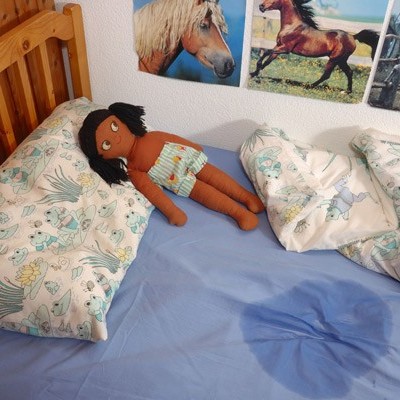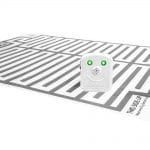
If you are worried about bedwetting and wondering how to stop wetting the bed at night, then a bedwetting alarm may be the answer. But how do bedwetting alarms work? Are bedwetting alarms effective? Are they successful to stop wetting the bed at night?
A bedwetting alarm is one of the safest and most effective ways to help one stop wetting the bed. No matter which type of bedwetting solution system you purchase, the underlying mechanism is the same. Alarms are typically recommended for users age 4 and older who are frequent bedwetters.
A bedwetting alarm is a small and compact electronic device which comprises of two parts – a moisture detection sensor and an alarm unit. There are primarily three types of bedwetting alarms; wearable alarms, bedside alarms and wireless alarms. In a wearable alarm, the sensor is s small clip or pad which touches the underwear, usually at the point of urination and the alarm unit is clipped on the t-shirt top where it can be heard. Wearable bedwetting alarms are recommended for children and teens. Bedside bedwetiting alarms are also called bell and pad alarms and they have a large urine detection mat on which the user sleeps. The alarm unit is placed on the table side. Bedside alarms are generally recommended for teens and adults.
Wireless alarms have a wireless urine detection sensor and a received. The sensor is clipped on the underwear and the sensor is placed at some distance. Bedwetting alarms use behavior conditioning or behavior modification to stop one from wetting the bed. On detecting urine, the sensor sends a signal to the alarm unit which in turn alerts the user. The alarm will sound till the user turns off the alarm. After the turn off sequence, the user should go and empty themselves in the bathroom and change to dry clothing. Over time, the user will start to wake up sooner and sooner until a brain-bladder communication has been established. Once this is done, the user generally stops bedwetting. This process takes several weeks and can depend on the age and gender among other things.
The best bedwetting alarm uses a combination of light-sound- vibration to alert users. The vibrations are generally strong, equivalent to a gentle tap. The lights help the user wake up at night and find the alarm so they can turn it off and return to bed. Sound is extremely important in a bedwetting alarm. The best bed-wetting alarms use loud tones and more than one tone. This is important so that deep sleepers can respond to the alarm at night and changing tones ensure that the user does not get accustomed to any one tone.
Alarms are a safe and reliable way to stop wetting the bed. Doctors often recommend alarms to their patients. Many alarms are covered by insurance providers and the purchase of an alarm is a FSA eligible expense. When using a bedwetting alarm, positive reinforcement, motivation and patience are all essential. Those who have been wetting the bed have been doing so for years, so it is normal that it may take some time for them stop wetting the bed. The best bed-wetting alarms do a great job in dealing with bedwetting and do it well.








